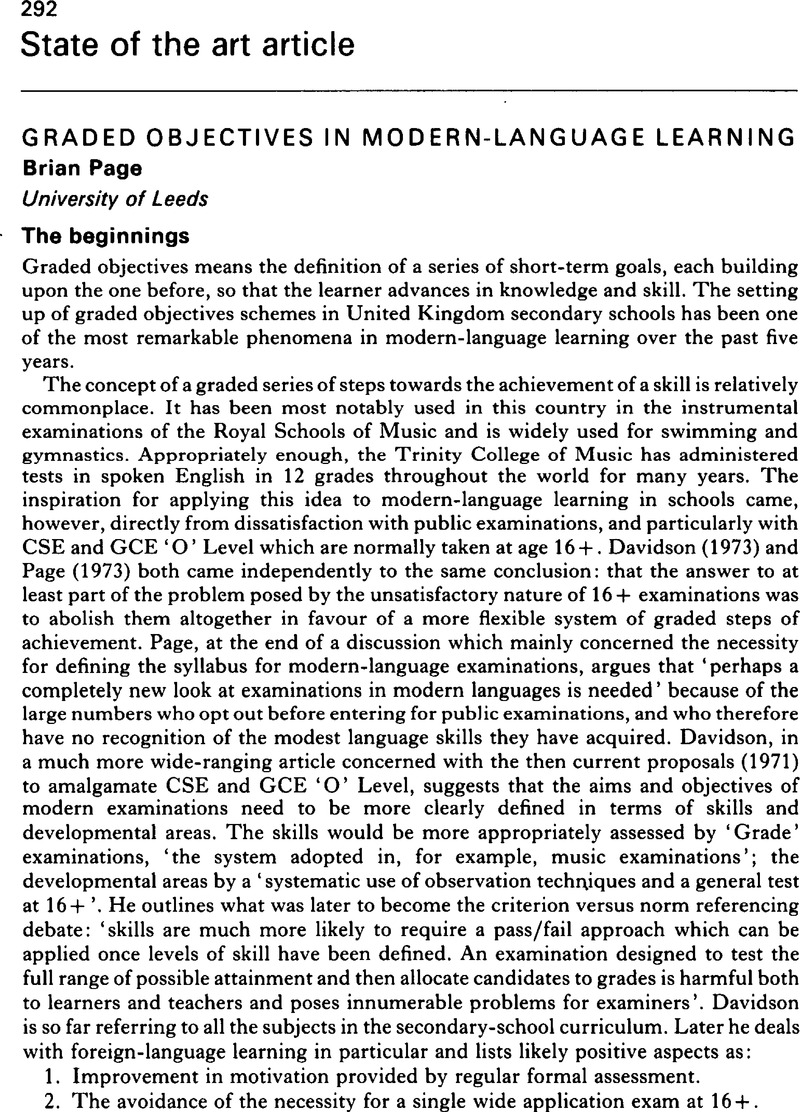Crossref Citations
This article has been cited by the following publications. This list is generated based on data provided by Crossref.
Quinn, T. J.
1984.
Functional Approaches in Language Pedagogy.
Annual Review of Applied Linguistics,
Vol. 5,
Issue. ,
p.
59.
Edmondson, Willis
1985.
Language purpose and language use.
Journal of Pragmatics,
Vol. 9,
Issue. 2-3,
p.
397.
Brindley, Geoff
1985.
Some current issues in second language teaching.
Australian Review of Applied Linguistics,
Vol. 8,
Issue. 2,
p.
87.
Pennycuick, D.B.
and
Murphy, R.J.L.
1986.
The impact of the graded test movement on classroom teaching and learning.
Studies in Educational Evaluation,
Vol. 12,
Issue. 3,
p.
275.
Pennycuick, D.B.
and
Murphy, R.J.L.
1986.
Mastery, validity and comparability issues in relation to graded assessment schemes.
Studies in Educational Evaluation,
Vol. 12,
Issue. 3,
p.
305.
Richards, Jack C.
and
Rodgers, Theodore S.
1987.
Through the Looking Glass: Trends and Directions in Language Teaching.
RELC Journal,
Vol. 18,
Issue. 2,
p.
45.



